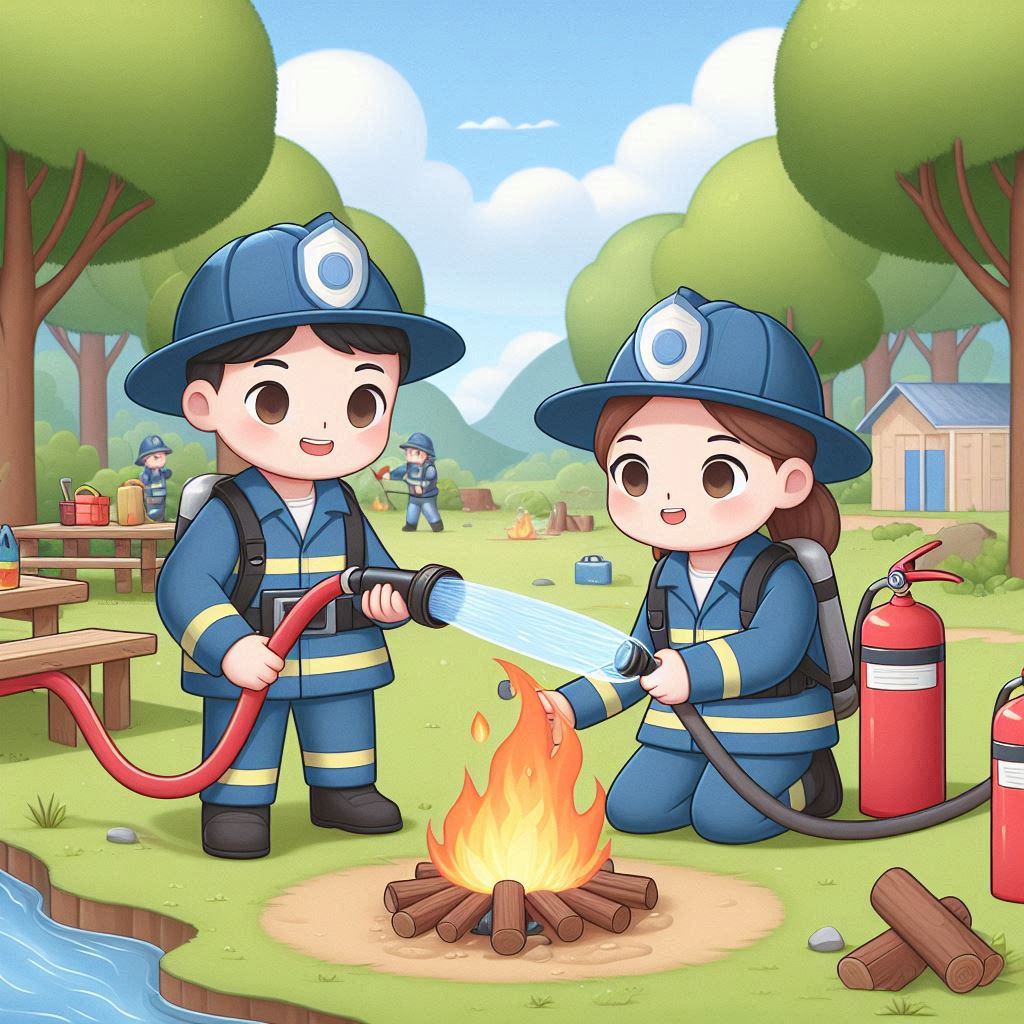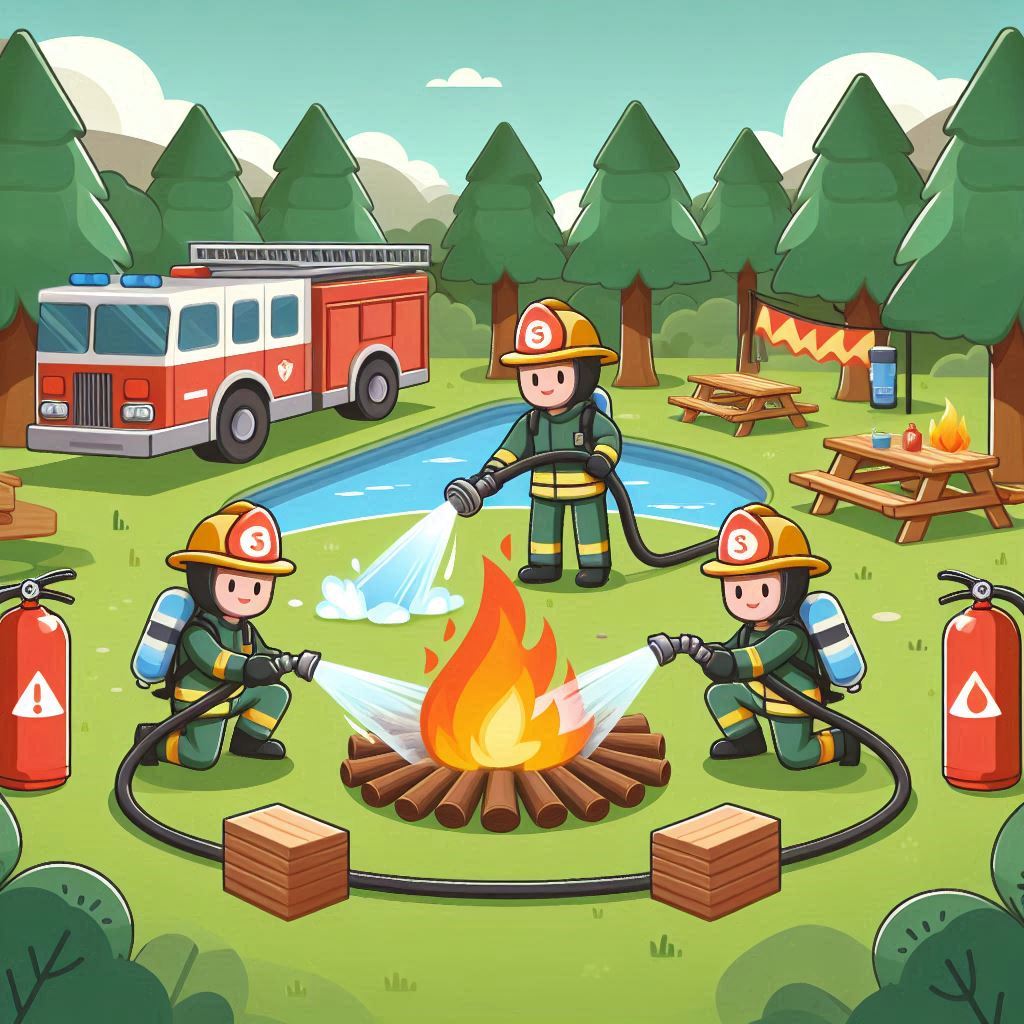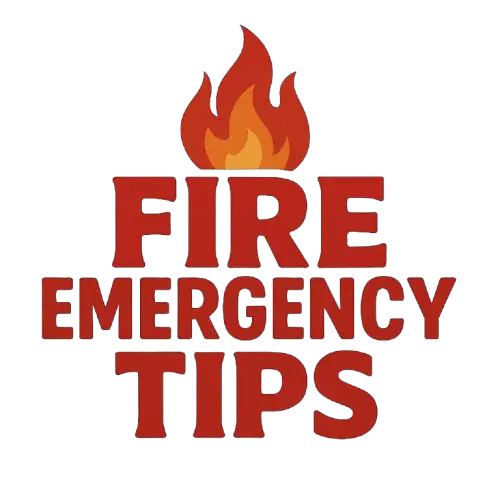
Extinguishing fires involves the application of three fundamental methods: cooling, starvation, and smothering. These techniques target specific components of the fire triangle—a basic model for understanding the source and progression of fires. Distinguishing features such as color, pattern, and movement aid in categorizing and addressing different types of fires.
1. Cooling Method
Overview: The cooling method aims to reduce the temperature of the burning material below its ignition point. By applying a substance that absorbs heat, the fire’s ability to sustain combustion is compromised.
Application:
- Commonly Used for Class A Fires: Involving ordinary combustibles such as wood, paper, and cloth.
How It Works:
- Water is a typical cooling agent, as it absorbs heat and lowers the temperature of the fuel.
- The cooling method disrupts the fire triangle by removing the heat component.
Considerations:
- Not suitable for all fire classes; may be ineffective or dangerous for certain situations, like electrical fires.
2. Starvation Method
Overview: The starvation method involves removing or isolating the fuel source to hinder the fire’s ability to sustain itself. By eliminating the fuel component, the fire triangle is disrupted, leading to extinguishment.
Application:
- Effective for Various Fire Classes: Can be applied to Class A, B, and C fires, depending on the specific tactics used.
How It Works:
- Removing the fuel source, often by creating a gap or barrier, prevents the fire from continuing to burn.
- Starvation interrupts the chemical reaction in the fire triangle, leading to extinguishment.
Considerations:
- Some methods of starvation may involve the use of firebreaks, specialized extinguishing agents, or shutting off fuel supplies.
3. Smothering Method
Overview: The smothering method works by covering the burning material with a substance that deprives it of oxygen. Without an adequate oxygen supply, the fire cannot continue to burn, disrupting the fire triangle and leading to extinguishment.
Application:
- Versatile Method for Different Fire Classes: Can be effective for Class A, B, and C fires, making it a widely used technique.
How It Works:
- Smothering agents, such as fire retardant foam or dry chemical powders, form a barrier over the fuel, cutting off its oxygen supply.
- Deprived of oxygen, the fire ceases to burn, completing the smothering method.
Considerations:
- Care must be taken to use the appropriate smothering agent for the specific fire class and conditions.
Fire Extinguishers Based Methods
Extinguishing a fire is a critical task that requires the right techniques to ensure effectiveness and safety. There are various methods for extinguishing fires, each tailored to different types of fires and situations. Here, we’ll explore three primary methods commonly used to combat fires.

1. Water-Based Fire Extinguishers
Overview: Water is one of the most traditional and widely used methods for extinguishing fires. It works by cooling the fire and removing heat, preventing the sustained combustion of materials.
Application:
- Class A Fires: Water is highly effective against fires involving ordinary combustible materials like wood, paper, cloth, and certain plastics.
How It Works:
- The water absorbs heat from the fire, reducing the temperature below the point of ignition.
- Water also forms a barrier between the fuel and the oxygen, suppressing the fire.
Considerations:
- Water should not be used on fires involving electrical equipment or flammable liquids, as it may worsen the situation or pose electrical hazards.
2. Carbon Dioxide (CO2) Fire Extinguishers
Overview: Carbon dioxide is a versatile and clean fire extinguishing agent commonly used in various settings. It works by displacing oxygen, interrupting the combustion process.
Application:
- Class B and C Fires: CO2 is effective against fires involving flammable liquids and electrical equipment.
How It Works:
- CO2 is stored as a pressurized gas in the extinguisher.
- When released, it rapidly displaces oxygen around the fire, suffocating it and interrupting the chemical reaction.
Considerations:
- CO2 is non-conductive, making it suitable for fires involving electrical equipment.
- It may not be as effective against Class A fires involving ordinary combustibles.
3. Dry Chemical Fire Extinguishers
Overview: Dry chemical extinguishers use a powdered agent to interrupt the combustion process and extinguish fires. They are versatile and effective for various fire classes.
Application:
- Class A, B, and C Fires: Dry chemical extinguishers are suitable for fires involving ordinary combustibles, flammable liquids, and electrical equipment.
How It Works:
- The dry chemical agent disrupts the chemical reaction of the fire, inhibiting the combustion process.
- It forms a barrier between the fuel and oxygen, preventing the fire from spreading.
Considerations:
- Dry chemical extinguishers can leave a residue that may be corrosive and should be cleaned after use.
- They are effective for a wide range of fires, making them a common choice for multipurpose fire extinguishers.
3. Classifying Fires and Their Extinguishing Methods
Fires are categorized into different classes, each requiring specific extinguishing techniques:
Class A: Ordinary Combustibles
- Materials: Wood, paper, cloth.
- Extinguishing Methods: Water, foam, dry chemical extinguishers.
Class B: Flammable Liquids
- Materials: Gasoline, oil, grease.
- Extinguishing Methods: Foam, CO2 extinguishers, dry chemical extinguishers. Water should not be used as it can spread the fire.
Class C: Electrical Fires
- Materials: Electrical appliances, wiring.
- Extinguishing Methods: CO2 extinguishers, dry chemical extinguishers. Water can be dangerous as it conducts electricity.
Class D: Combustible Metals
- Materials: Magnesium, sodium, potassium.
- Extinguishing Methods: Special dry powder extinguishers designed for metal fires. Water can react explosively with some metals.
Class K: Cooking Oils and Grease
- Materials: Cooking oils, fats.
- Extinguishing Methods: Class K extinguishers, which often use wet chemical agents designed to cool and smother the fire. Water can be dangerous and cause splattering.
4. Tips for Fire Extinguishing
- Assess the Situation: Before attempting to extinguish a fire, ensure it is safe to do so. If the fire is large or spreading rapidly, evacuate immediately and call emergency services.
- Use the Right Extinguisher: Ensure you’re using the correct type of fire extinguisher for the class of fire. This maximizes effectiveness and safety.
- Aim at the Base of the Fire: When using an extinguisher, always aim at the base of the flames, where the fuel source is located, rather than the flames themselves.
- Sweep the Nozzle: For portable extinguishers, use a sweeping motion to ensure coverage over the fire area.
- Evaluate if the Fire is Out: After extinguishing a fire, make sure it is fully out and cool before leaving the area. Many fires can reignite if not fully extinguished.
Conclusion
Understanding the fire triangle—comprising heat, fuel, and oxygen—provides a foundation for effective fire extinguishment. The cooling method tackles the heat component, starvation focuses on removing or isolating the fuel, and smothering interrupts the oxygen supply. Recognizing the distinctive features of fires, including color, pattern, and movement, aids in categorizing them and employing the most suitable extinguishing method.
These three methods, when applied strategically based on the nature of the fire, contribute to successful firefighting efforts while prioritizing safety and minimizing damage.
